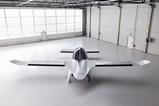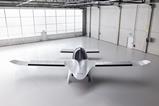Newly established military helicopter engine joint venture EURA is gearing up for a busy final quarter of the year following the appointment of top management at the firm as it contemplates a response to a prospective European Defence Fund (EDF)-backed research project.
Founded in June this year by propulsion partners MTU Aero Engines and Safran Helicopter Engines (SHE), EURA was established to develop a next-generation powerplant for the military rotorcraft being contemplated for service-entry from the middle of next decade.

On 26 September, the pair named Wolfgang Gartner – currently head of future helicopter engine programmes at MTU – as chief executive of Bordes, France-based EURA, while Jean-Michel Larricq, director OEM strategic business development at SHE, will be his deputy and the firm’s general director.
With those key appointments in place, EURA – or European Military Rotorcraft Engine Alliance – can begin working in earnest on its engine development.
Central to that process will be understanding the requirements for any future powerplant. EURA says its envisaged engine will be “ideally suited” for the helicopter concepts being studied through the European Next Generation Rotorcraft Technologies (ENGRT) initiative – a project awarded €40 million ($44.5 million) by the EDF for its first phase, it is coordinated by Airbus Helicopters and has been running since 2022.
“The engine’s outstanding characteristics will give Europe’s next generation of military helicopters enhanced capabilities – greater range, higher speed, better maneuverability and higher availability,” the partners say.
Although both MTU and SHE are already active in the ENGRT consortium – receiving €600,000 and €900,000, respectively – they expect an engine-specific research project to follow.
“EURA is preparing to respond to an anticipated research call by the EDF on [turbo]shaft engine technology,” it says.
Accordingly, this year MTU and SHE will “work to set up a network of appropriate partners” that will form a consortium to address any EDF requirement.
The companies engaged in the ENGRT project are drawn from eight different nations – Finland, France, Germany, Greece, Italy, the Netherlands, Spain, and Sweden – and also include sensor and weapons manufacturers.
In addition to the ENGRT effort, a group of seven NATO members are involved in a separate project to develop a future military helicopter.
Called the Next Generation Rotorcraft Capability (NGRC), project members again include France, Germany, Greece, Italy, the Netherlands, with the addition of Canada and the UK.
As part of that initiative, a study into propulsion options was carried out by GE Aerospace and completed in July this year.
It examined a range of propulsion systems – including current and future gas turbine technology, hybrid-electric, and hydrogen fuel cell and combustion powertrains – analysing their capability, maturity and supportability, among other criteria, alongside their suitability to power a range of future rotorcraft configurations such as tiltrotors or compound designs.
GE’s conclusion was that a gas turbine using “next-gen 2025 technology” would offer the “likely best option”, meeting lifecycle cost demands and minimum capability requirements, according to a presentation from NGRC programme manager Cyril Heckel at the Helitech Expo on 24 September.
A gas turbine based around 2035 technology could offer a capability improvement, at the possible risk of higher lifecycle costs, the report says, recommending further analysis.
Similarly, hybrid-electric power could offer benefits, again with the risk of increased lifecycle costs. Hydrogen was rejected, meanwhile, as it “does not meet NGRC attributes”.
However, the NGRC project says aircraft developers should “consider provisions for spiral upgrade” – starting with the 2025 gas turbine as the baseline and progressively enhancing the powertrain as new technologies become available.
Contracts for NGRC integrated platform concept study work were awarded to Airbus Helicopters, Leonardo Helicopters and Sikorsky in July.






























